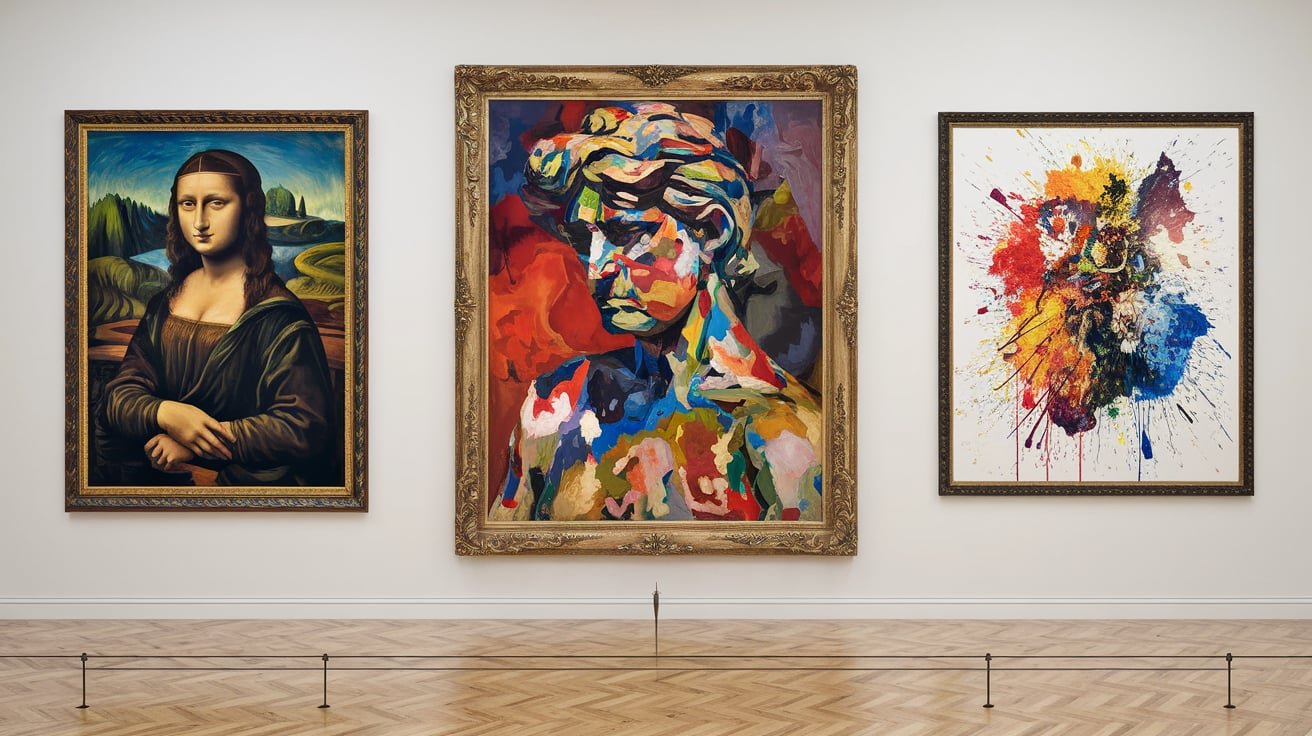
Art is a universal language that showcases human creativity, history, and culture. Over time, different art styles have emerged, each reflecting the values of its era. Understanding these styles enhances our appreciation and highlights their impact on society. From the grandeur of Renaissance works to the abstract modern art, every movement tells a story worth exploring.
Popular Art Movements and Their Significance
To appreciate the world of art fully, it’s essential to understand some of its most iconic styles. Here are a few movements that have left a lasting mark on history:
The Renaissance (14th–17th Century)
The Renaissance marked a cultural rebirth in Europe, characterized by a renewed interest in humanism, nature, and classical antiquity. Artists from this period, such as Leonardo da Vinci and Michelangelo, focused on realism, perspective, and the human form in their work. The result? Iconic masterpieces like The Last Supper and The Creation of Adam.
Cubism (Early 20th Century)
Pioneered by Pablo Picasso and Georges Braque, Cubism broke traditional rules of perspective and representation. Instead of depicting objects from a single viewpoint, Cubist artists fragmented their subjects and presented multiple perspectives simultaneously. Les Demoiselles d’Avignon by Picasso remains a definitive example of this transformative art style.
Abstract Expressionism (1940s–1950s)
Abstract Expressionism emerged as a post-World War II movement in the United States. This style emphasized spontaneity, emotion, and individual expression over traditional representation. Artists like Jackson Pollock and Mark Rothko used unconventional techniques to create works that evoked powerful feelings than concrete forms.
Characteristics and Techniques of Art Styles
Each art movement stands out due to its unique characteristics and techniques. Here’s what makes some of the most notable styles so distinct:
- Renaissance Art: Focused on proportion, depth, and light, using techniques such as chiaroscuro (contrast between light and dark) and sfumato (soft blending of edges). This created realistic and detailed works.
- Cubism: Known for geometric shapes, fragmented forms, and muted color palettes. Artists often used oil paint and collage techniques to compose their groundbreaking pieces.
- Abstract Expressionism: Characterized by bold brushstrokes, dripping paint, and large canvases. This style lacked defined figures, focusing instead on emotion and movement.
The Evolution of Art Styles and Contemporary Influences
Art is never static. Each movement reflects and reacts to the sociopolitical, technological, and cultural shifts of its time. Renaissance art drew inspiration from the intellectual resurgence of classical studies, whereas Abstract Expressionism emerged in response to the profound existential questions that followed World War II.
Contemporary art borrows elements from past movements, blending techniques and ideologies to create something new. Modern artists often blend Cubist-inspired geometric abstraction with digital media, seamlessly connecting the traditions of the past with the innovations of the present.
The Role of Technology in Art
The advancement of technology has played a pivotal role in both the development and preservation of art styles. Digital tools have expanded the possibilities for artists, enabling them to experiment with 3D modeling, virtual reality, and artificial intelligence. Movements like digital art and glitch art owe their existence to technological innovation.
Simultaneously, technology has become vital in preserving the legacy of historical art. Techniques like high-resolution scanning and virtual museum tours make works by da Vinci or Picasso accessible to audiences worldwide, ensuring that their influence continues for generations.
Why Understanding Art Styles Matters
For artists, a deep understanding of various art styles is invaluable—it serves as both inspiration and a toolkit for creativity. For art enthusiasts, it enriches the way we see and interpret the world around us. Whether diving into the vibrant and unique Key West art scene or exploring global art movements, recognizing the intent, techniques, and contexts behind diverse styles enhances our connection to humanity’s cultural and historical narrative.
Art, in all its forms, remains a mirror of society, reflecting our collective struggles, triumphs, and imaginations. By exploring its vast styles, we not only develop a deeper appreciation for creativity but also celebrate the rich tapestry of human expression.
Whether you’re an artist or an admirer, take the time to uncover the beauty of various art styles. You never know what story—or masterpiece—you’ll discover.
Conclusion
Art connects us across time and cultures, sharing emotions and stories while sparking creativity. By appreciating diverse art styles, we enrich our lives, build empathy, and preserve a legacy that inspires future generations.


